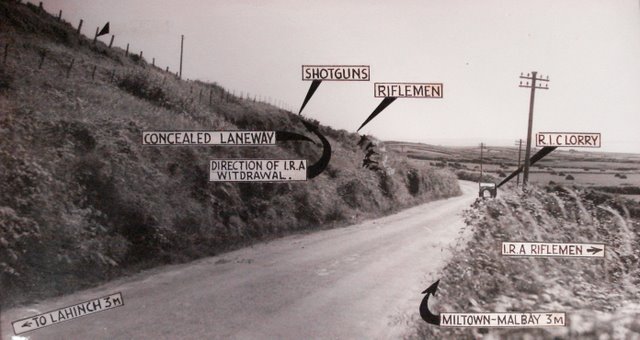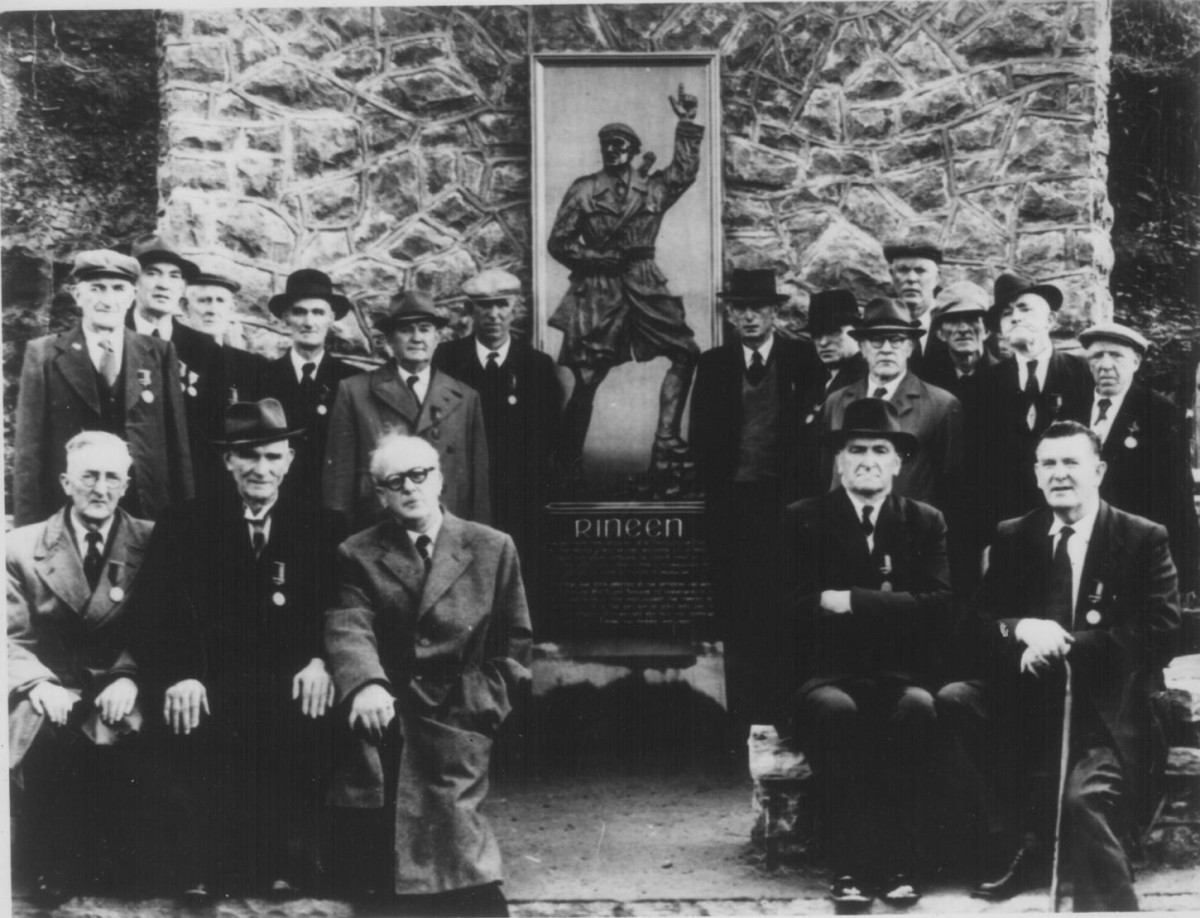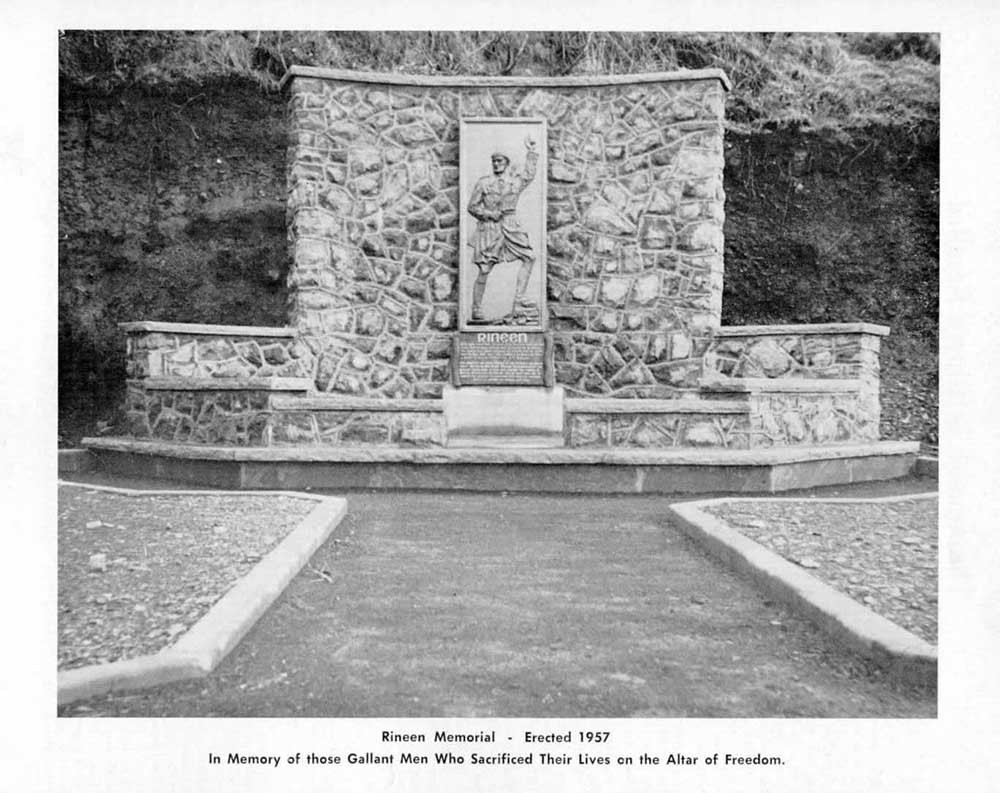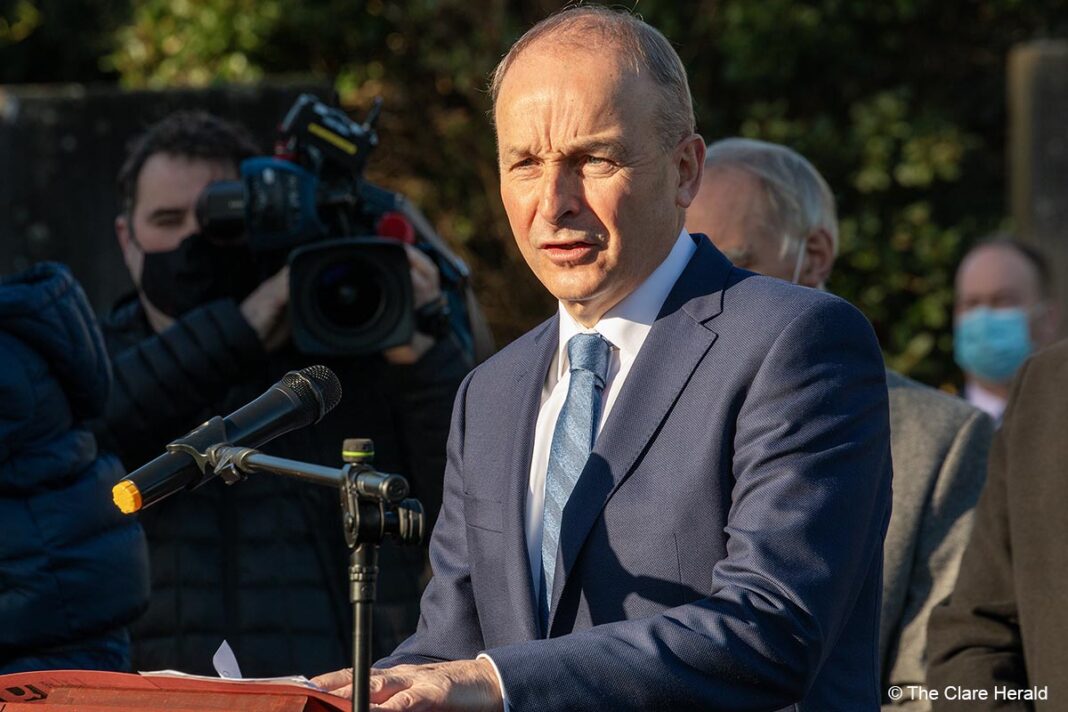September 22nd 2023 was 103rd anniversary of the most significant event in the War of Independence in Clare which also had a major impact nationally in the struggle for independence at the peak of the war, The Rineen Ambush at Drummin Hill on the main Lahinch to Miltown Road.
The Tánaiste Micheál Martin TD has attended the deferred commemoration of the Rineen Ambush in West Clare this afternoon. The event is being marked with a day of remembrance, deferred from its centenary in 2020, and led by cathaoirleach Mary Crawford.
Earlier, a blue plaque was unveiled by Major General Adrian Ó Murchú, marking the birthplace of Comdt. Ignatius O’Neill on Miltown Malbay’s main Street. This was followed by a remembrance mass at 10:30am for the men and women of the 4th Battalion, Mid Clare Brigade in St. Joseph’s Church, Miltown Malbay.
The commemoration then moved to the Rineen Monument, mid-way on the main N67 road between Lahinch and Miltown Malbay.
Tánaiste Micheál Martin, on behalf of the government and the people of Ireland, and Major General Adrian Ó Murchú on behalf of the Defence Forces, laid wreaths.
Mr Martin then made address at the Monument. The Tánaiste said:
“The people of Clare have always shared a unique sense of community. With the Atlantic’s vast expanse as a backdrop, and perched at the far periphery of a continent, it has always had a special place in our national story and culture.
This is a resilient place. A place which has always been at its strongest and most dynamic because of a spirit of sharing a common cause and a belief in working together.
Few moments in history show this more than the stirring contribution which the people of Clare made to our struggle for independence. And within this, the ambush which took place here on Dromin Hill brought the bravery and sacrifice of Clare to the attention of Ireland and the wider world.
The events of September 22nd, 1922, and the weeks following were a turning point in our revolution. They marked a significant escalation of conflict and demonstrated unequivocally that no one was safe from the anger of a wounded imperial power which had so recently won a world war but could not subdue the people of Ireland.
And when you look deeply at the events and personalities involved in the West Clare Brigade and the ambush you see the unique nature of our revolution, their complexity, and the role which they played in the progress which our country achieved.
We are incredibly lucky in that over a century after the ambush the men and women who fought then have left many honest and personal accounts of those times.

They were not naïve; they knew that the struggle would not be easy – and they were as open to passionate disagreements with each other as you would expect from any group of young idealists.
In the weeks leading up to the ambush there was a determination to address the acute lack of arms held by volunteers and also to show crown forces that Clare was not safe territory for them. In this, they were motivated by their comrade Martin Devitt who had been killed in February.
There were disagreements about planning and the date to be chosen, but these were quickly overcome. All of the volunteers from a wide area converged here at 6 am on that Wednesday morning.
They were under the command of Ignatius O’Neill, who quickly set about positioning the volunteers and setting up a system of signals as well as routes for withdrawal.
They stayed without movement or noise for six hours before the first signs of troops were seen. There was no engagement at that point because they mistakenly thought that there were more trucks on the way and that they would be outnumbered.
So, the troops passed by on their way to Miltown Malbay and it was two further hours before they returned, and the ambush got underway.

They quickly achieved their objective but then realised that coming the other direction was a large contingent of troops and they were vastly outnumbered.
It was the discipline and organisation of the volunteers which meant that they were able to get away relatively unscathed and to remain active for the rest of the War of Independence.
Very soon the name of Rineen was known to all who followed events in Ireland. Within weeks it was remembered in a ballad song proudly throughout Clare. It was the largest ambush up to that moment and it marked a major inflection point for the conduct of the War on both sides.
For the forces loyal to Dáil Éireann it showed how they could undertake larger actions and move beyond mainly night-time attacks focused on isolated buildings. In the following months other ambushes led to the government losing effective control of large swathes of the South.
The image of brave volunteers coming together in daring actions became known to the world and underpinned the mass sympathy which was shown to the cause of Ireland.
For the government’s forces Rineen was also a turning point. In the weeks and months afterwards, indiscriminate reprisals brought shame and undermined the standing of the largest empire in the world.
On the floor of the House of Commons opposition to policy in Ireland began to find its voice, and the government began to double down on the extreme countermeasures which they were implementing. Instead of reining in the Black and Tans they stood behind them and, in doing so, they committed a fatal error which undermined their claim to any moral legitimacy.
Rineen was no small event – it was and remains a genuinely historic encounter which both reflected and shaped its time. We can see this in the stories of those who involved. We can see it in what they shared and also in how they came to differ in the decades which followed.
The most detailed account of the ambush which was gathered by the Bureau of Military History was given by John Joe Neylon in 1954. He was the eighth of fifteen children. A modest man from a modest family, he was in every way committed to the interests of Clare and Ireland. And in this, he was very representative of the ordinary men and women who fought in War of Independence
From his account we get a sense of the nervous weeks leading up to the ambush and the long and dramatic hours waiting here.
It is clear that Ignatius O’Neill’s leadership was critical in terms of setting up the ambush and knowing how to get volunteers away in the face of overwhelming opposition. In the character of O’Neill, you find many of the complexities and contradictions in Irish republicanism.
He had emigrated to the United States and when the First World War broke out, he went to Canada where he enrolled in Irish Guards. He fought in Ypres and at the Somme, where he was wounded and sent home after a period of recovery in Britain.
And when he returned here, he again signed up – but this time for the cause of Irish independence. And as a volunteer in the Irish Republican Army, the army of Dáil Éireann, he served with great bravery and success.
And as he stood in this place directing his comrades and covering the retreat he was, as he had been at the Somme, injured. He was carried from here in the back of Michael Dwyer and brought to Dr Michael Hillery for treatment.

Hillery, who was medical officer for the Brigade, was of course the first in an ongoing list of members of his family who have given great service to the people of Ireland and internationally to the values which underpin our democracy.
It is a reminder that Rineen and other actions throughout the country, had an enormous and positive impact.
One of the things which distinguished our great revolutionary generation is that they refused to stand still. They rejected the idea of being defined by the needs and methods of one time. They wanted to create a country which could proudly take its place amongst the nations of the world, and which would continue to evolve.
And because so many of them lived for many more years, we don’t need to ask what they might have done later on or what they would have seen as the legitimate ways to promote Ireland’s interests.
Overwhelmingly they devoted themselves to building our democracy, to turning one of the world’s poorest countries into a proud and successful country which continues to face many challenges but has the ability to overcome them.
Built on the bravery of units such as the Mid-Clare Brigade and the overwhelming and consistent support of the Irish people, they remained intricately linked to the communities which they came from.
Unlike in many other countries, our revolutionary generation was proud to remember its service but never allowed a cult of militarism to develop – and they fully embraced the new opportunities opened up by the profound success of their struggle.
The fact that we could not meet here to remember them on the centenary of the ambush reflected the shared national effort we were then engaged in to get through the deadliest pandemic in a century.
It is because of the dedication and work of the Centenary Committee that it was agreed to go ahead with today’s ceremony and to fulfil our shared obligation to remember the Ambush and all who participated in it.
When it comes to events which framed our history and created so many of our opportunities, we must never forget our duty to remember them, to listen to the story of the complex and diverse movement which won our independence.
We have a duty to try to understand their unique service, to be vigilant against the misuse of their memory and to honour their sacrifices.

